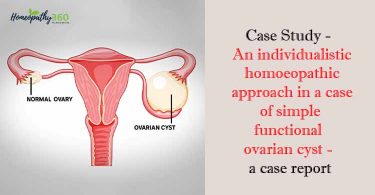
Number of diseases affected human race, the first one leprosy followed by Smallpox, Plaque, Syphilis, T.B, AIDS, Swine flu and now EBOLA.A book THE HOT ZONE talks about the outbreak of Ebola in America.
Ebola hemorrhagic fever (Ebola HF) is one of numerous Viral Hemorrhagic Fevers. It is a severe, often fatal disease in humans and nonhuman primates (such as monkeys, gorillas, and chimpanzees).
Ebola HF is caused by infection with a virus of the family Filoviridae, genus Ebola virus. When infection occurs, symptoms usually begin abruptly. The first Ebola virus species was discovered in 1976 in what is now the Democratic Republic of the Congo near the Ebola River. Since then, outbreaks have appeared sporadically.
There are five identified subspecies of Ebola virus. Four of the five have caused disease in humans: Ebola virus (Zaire Ebola virus); Sudan virus (Sudan Ebola virus); Taï Forest virus (Taï Forest ebola virus, formerly Côte d’Ivoire ebola virus); and Bundibugyo virus (Bundibugyo ebola virus). The fifth, Reston virus (Reston ebola virus), has caused disease in non human primates, but not in humans.
The natural reservoir host of Ebola viruses remains unknown. However, on the basis of available evidence and the nature of similar viruses, researchers believe that the virus is zoonotic (animal-borne) with bats being the most likely reservoir. Four of the five subtypes occur in an animal host native to Africa.
INDIAN FLYING FOX
The Indian flying fox (Pteropus giganteus), also known as the greater Indian fruit bat, is a species of flying fox in the Pteropodidae family.
The Indian flying fox lives in rain forests and swamps, where a large body of water is nearby. It is found in Bangladesh, China,India, the Maldives, Nepal, Pakistan, and Sri Lanka.
Like other fruit bats, the Indian flying fox has been found to act as a natural reservoir for a number of diseases including ebola, rabies, and coronaviruses. These can prove fatal to humans and domestic animals. Researchers tested fruit bats for the presence of the Ebola virus between 2001 and 2003. Three species of bats tested positive for Ebola, but had no symptoms of the virus. This indicates the bats may be acting as a reservoir for the virus.
2014 Ebola Outbreak in West Africa
The Guinean Ministry of Health, the Ministry of Health and Sanitation of Sierra Leone, the Ministry of Health and Social Welfare of Liberia, and the Nigerian Ministry of Health are working with national and international partners to investigate and respond to the outbreak.
Incubation period: 2 days to 3 weeks.
Signs and Symptoms
- Fever
- Headache
- Joint and muscle aches
- Weakness
- Diarrhea
- Vomiting
- Stomach pain
- Lack of appetite
- Some patients may experience:
- A Rash
- Red Eyes
- Hiccups
- Cough
- Sore throat
- Chest pain
- Difficulty breathing
- Difficulty swallowing
- Bleeding inside and outside of the body
The prevention of Ebola HF presents many challenges. Because it is still unknown how exactly people are infected with Ebola HF, there are few established primary prevention measures.
When cases of the disease do appear, there is increased risk of transmission within health care settings. Therefore, health care workers must be able to recognize a case of Ebola HF and be ready to employ practical viral hemorrhagic fever isolation precautions or barrier nursing techniques. They should also have the capability to request diagnostic tests or prepare samples for shipping and testing elsewhere.
Barrier nursing techniques include:
- Wearing of protective clothing (such as masks, gloves, gowns, and goggles)
- Using infection-control measures (such as complete equipment sterilization and routine use of disinfectant)
- Isolating patients with Ebola from contact with unprotected persons.
If you must travel to an area with known Ebola cases, make sure to do the following:
- Practice careful hygiene. Avoid contact with blood and body fluids.
- Do not handle items that may have come in contact with an infected person’s blood or body fluids.
- Avoid funeral or burial rituals that require handling the body of someone who has died from Ebola.
- Avoid contact with animals and raw meat.
- After you return, monitor your health for 21 days and seek medical care immediately if you develop symptoms of Ebola.
Ebola virus attacks on our immune system and makes it weak. Homoeopathy helps to rebuilt that weakened immune system and also acts as a prophylaxtics so as to control and stop the spread of the Epidemic.
Following are homoeopathic medicine for treatment divided in two parts:
1. Homoeopathic medicine in Ebola outburst free area:
Ebola Virus Obsession
The current “worst Ebola epidemic in history” has been going on in West Africa since March. But it is only in the past few weeks that a second deadly “virus” has emerged, infecting everyone with another contagious virus: fear.
Fear spreading around other countries too which itself bringing down the immunity of the people for which ACONITE CM can be given to counteract the effects developind due to fear.
2. Homoeopathic Medicines in Ebola Outbreak (western Africa)
- CROTALUS HORRIDUS is a homeopathic cure for Ebola Virus at 30C dilution according to reliable sources.
- As a preventative if an outbreak happens nearby, Crotalus horridus 30C, one dose daily, until the threat is out of the area is the method.
- If a person is infected, the remedies most commonly used would be the following.
- One dose every hour, but as the severity of the symptoms decrease, frequency is reduced. If no improvement is seen after 6 doses, a new remedy ought to be considered.
- Crotalus horridus 30C – Is to be considered for when there is difficulty swallowing due to spasms and constriction of the throat, dark purplish blood, edema with purplish, mottled skin.
- Bothrops 30C – Is the remedy to think of when nervous trembling, difficulty articulating speech, sluggishness, swollen puffy face, black vomiting are present
- Lachesis mutus 30C ,– when there’s delirium with trembling and confusion, haemorrhage in any area, consider this remedy. Often, the person cannot bear tight or constricting clothing or bandages and feels better from heat and worse on the leftside
The emergence of these above named dreaded diseases swallowed mankind in past or recently and many no. of other rain forest agents appears consequence of the ruin of tropical biosphere.
The emerging viruses are surfacing from ecologically damaged parts of the earth.
In a sense, the earth is mounting an immune response against human species. It is beginning to react to the human parasite.
The overall cure shall be to plan public health as global health ecologically. Man is not centre of web of world but a strand. If rest of the web exist man will exist.
Author: Dr. Pankaj Aggarwal, M.D. (Hom.)





